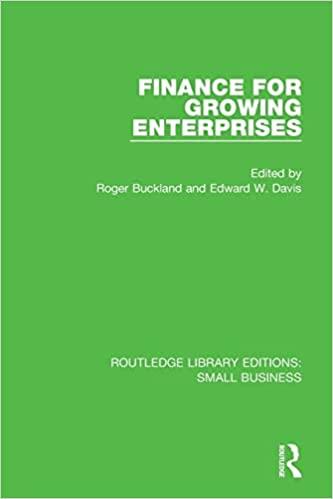Question
Desiree is a small business owner who is looking for some advice from you. She started her business, Desirees Delicacies, earlier this year. With a
Desiree is a small business owner who is looking for some advice from you. She started her business, Desirees Delicacies, earlier this year. With a natural talent for cooking, Desiree has been making and selling a variety of handmade products such as jellies, jams, and pickles. On average, she charges $10 for a jar of jelly, $12 for a jar of jam, and $15 for a jar of pickles. The jams and jellies are made according to Desirees immediate customer demands and availability of fresh fruits, but she pickles fruits and vegetables in anticipation of what might be a hot sale later. So far, halfway through the year, the sales revenues break down as follows: Jelly Jams Pickles $3,200 $3,600 $1,800 Desiree expects the second half of sales to be 40% higher than the first half. She has a waitlist for pickles as she has sold out everything she pickled in the spring. She is scrambling to get hundreds of pickle jars set up as she completes jam and jelly orders through the summer. She expects that her fall and winter seasons will become busy with growing sales, which will make her summer even more hectic. Desiree is considering hiring a seasonal helper next year which will help her complete more work. She would pay the helper $10,000 over the four summer months and that would help boost sales. With the hiring of a helper, Desiree believes her sales can grow at 25% per year for the next three years. Without hiring help, she believes there will be 10% annual growth. Desiree has been told that, as a sole proprietor, she would be responsible for remitting both the employee and employer portions of CPP contributions. She wants confirmation on this. She is planning on remaining in the EI program in case there is not much work in the colder months, though she is not sure about all of the benefits and drawbacks of doing so. She used to earn an annual salary of $30,000 per year as an employee. She is wondering what her takehome pay might be and what her biweekly payroll journal entries might look like for this year, assuming her two estimates hold true: 1. Her effective personal income tax rate is 10%. 2. Operating costs equal 15% of revenues. She is also wondering how things may look tax-wise three years from now (assume she hired the help). She expects that her income tax rate will be 12% then.Last year, Desiree inherited $50,000 worth of bonds scheduled to pay 5% for the next two years. This extra income is helpful since it could take time for her business to become successful. She is wondering how these investments would be categorized under IFRS 9 and what the correct reporting process is. She is also thinking about what she might do with the money when the bonds expire- perhaps she will be in a great position to open a retail store in the city! Desiree is happy to start her own business- she felt that her work as an employee was only going to result in 5% raises each year. However, she is worried about making enough money to survive. She feels that she needs to eventually earn at least as much as she used to as an employee. Please advise Desiree on continuing this business compared to returning to employment. Also, give her any business recommendations you can.
Step by Step Solution
There are 3 Steps involved in it
Step: 1

Get Instant Access to Expert-Tailored Solutions
See step-by-step solutions with expert insights and AI powered tools for academic success
Step: 2

Step: 3

Ace Your Homework with AI
Get the answers you need in no time with our AI-driven, step-by-step assistance
Get Started


